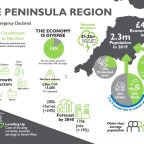
Celebrating Singles’ Day and what it tells us about Chinese retail
With Black Friday just past us, U.S. retailers are winding down from one of the biggest retail spending weekends of the whole year. Although it’s not yet known, it’s very likely that the Black Friday weekend has surpassed 2017 net spend which earned retailers a staggering $7.9 billion during a single 24-hour window.
While this is an impressive number, it pales in comparison to the Chinese equivalent, which is hosted by e-commerce giant Alibaba and known colloquially as ‘Singles’ Day’. This years’ iteration took place on 11th November, and managed to top $30 billion over the course of just 24 hours trading.
Make no mistake; Singles’ Day is the single biggest consumer holiday in the world. But what does it tell us about Chinese retail and how this compares with the UK and U.S. markets?
Delving Beyond the Numbers – A Snapshot into Chinese Retail
By recording sales of more than $30 billion, Alibaba smashed its own record for Singles’ Day and easily beat last years’ total spend of $24 billion.
Incredibly, Singles’ Day regularly racks up bigger sales than Black Friday and Cyber Monday combined, despite the fact that these two events are among the biggest consumer events in the western world.
This incredible spending power continues to be driven by rising consumption in China, which is becoming so large that the country is now the single most important market for luxury sales and car companies.
This was not always the case, however, as the country’s previous communist government prioritised saving to fund domestic investment and accumulate foreign capital through export surpluses. This meant that as workers’ incomes rose, they struggled to afford luxury goods that were in-demand overseas.
Since 2008, however, the combination of a tighter labour market, rising wages and a housing price boom have more than doubled average incomes in China, driving sustained consumer spending and providing a shot in the arm to the nation’s e-commerce sector.
How Does this Compare with the U.S. and UK Economies?
At first glance, this would suggest that China’s economy is more prosperous than its western neighbours, but this does is not necessarily the case.
In fact, the sheer size of the Singles’ Day spend can be attributed to the bustling Chinese population, which dwarfs the number of consumers in the UK and the U.S..
Beyond this, there are also some startling figures regarding debt-to-GDP ratios to consider. While both the U.S. (106%) and the UK (89%) have relatively high debt-to-GDP ratios, for example, the corresponding figure for China peaked at 256% in the middle of 2017. This has since fallen slightly, but it still hints at high levels of borrowing and unsustainable economic growth in the region.
Household debt levels in China also reached record highs in September, while consumer borrowing in the U.S. and the UK has stagnated recently and banks look to take a more responsible approach to lending.
So although there’s still a high demand for loans in the west, the economy is less reliant on debt than their contemporaries in China.
With the Chinese economy also under threat from a sustained slowdown and the ill-timed trade war with the U.S, the record spend on Single’s Day should not distract from the challenges facing the nation. While its consumer base is huge and far bigger than that in the U.S. and the UK, it faces many of the same issues and is struggling to cope with spiralling debt levels across the board.

















